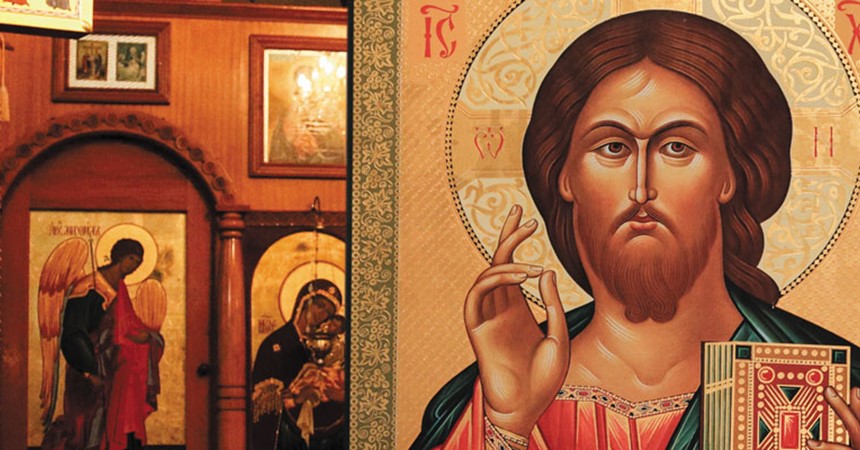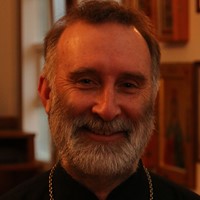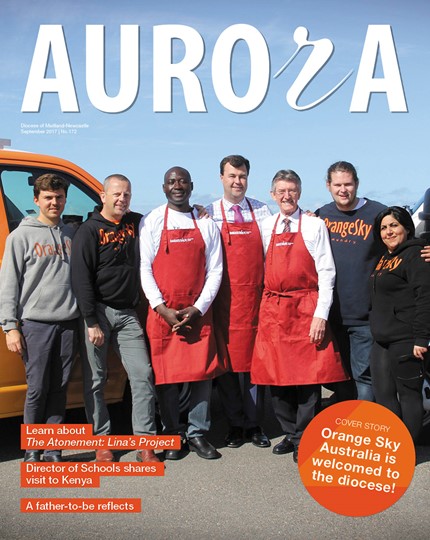Through the preaching of the apostles great centres of Christianity arose in the East of the Roman Empire – Antioch, Jerusalem, and Alexandria – and in the West, in Rome itself. In time Constantinople, the new capital of the Roman Empire constructed on the site of ancient Byzantium, became the pre-eminent centre of Christianity in the East.
Why “Orthodox” Christianity?
The Christianity of the East has long been known as Orthodox Christianity. The word “orthodoxy” comes from two Greek words, orthos – meaning right or straight – and doxa – meaning both opinion and glory. Orthodox Christianity understands itself in both these ways – as that form of Christianity in which faithful teaching – right opinion – and fitting worship – right glory – have been preserved.
In the history of faithful teaching in the Eastern Orthodox Church the Seven Ecumenical (or “universal”) Councils hold a place of particular importance. These gatherings were universal in the sense that they brought together bishops and other clergy from throughout the world. Convened between 325 AD and 787 AD, the Councils defended and articulated faithful teaching. The distinctive theological language and spiritual life of Eastern Orthodox Christianity developed in this period of history and the Holy Fathers of the Seven Ecumenical Councils are revered to this day.
Eastern Orthodox worship also developed its characteristic form during these centuries. The rite now used throughout Orthodoxy has its roots in the practice of Christians in Antioch and Constantinople, with the monastic life of the Eastern Church exercising a profound and lasting influence. Eastern Orthodox worship is highly formal and characterised by a rich hymnody that draws extensively on both Old and New Testament themes. Distinctive elements of Orthodox worship include the veneration of icons; unaccompanied chanting or singing; the use of richly embroidered vestments and oil lamps, candles and incense; standing, prostrating and making the sign of the Cross during prayer and an elaborate cycle of feasts and fasts. The greatest of the feasts of the Orthodox Church is Easter, generally called “Pascha”, the commemoration of the Resurrection of Christ.
Icons
Perhaps the most recognisable expression of Orthodox Christianity is the icon, an image of Christ, the Virgin Mary, one or more saints, or a scene from sacred history. Orthodox churches and homes are filled with these images and the faithful kiss them and burn candles and oil lamps before them.
In Orthodox Christianity icons are not an aesthetic option but a necessary part of spiritual life. Icons of Christ, for example, are inextricably bound up with the defence of the doctrine of the Incarnation. If the Word truly became flesh and dwelt amongst us, then He can be depicted iconographically.
The estrangement of East and West
Over the centuries the Eastern and Western parts of the Church were separated by political developments, by geography and particularly by language – Greek in the East and Latin in the West. These natural divisions were accentuated by significant changes in faith and order in the Church of Rome. These were the teaching that the Holy Spirit proceeded from the Father and from the Son – with the insertion of those words, filioque in Latin, into the Creed – and the insistence on the universal primacy of authority of the Bishop of Rome.
Despite numerous efforts over the centuries this estrangement of East and West, which became definite in 1054 AD, continues to this day. From the Eastern Orthodox perspective, it has been compounded over time by further changes in faith and order in the Church of Rome and by the doctrinal, organisational and – increasingly – moral disarray of the various ‘protestant’ groups that have broken away from it.
The spread and historical experience of Orthodoxy
As a result of missionary work Orthodox Christianity spread from Greece and the Middle East into the Balkans, Eastern Europe and Russia. Various national and regional churches arose which, although self-governing, understand themselves together to constitute the One, Holy, Catholic and Apostolic Church.
Already shaped by the struggle in the first one thousand years after Christ to preserve faithful teaching from false ideas, Orthodoxy in the second thousand years was profoundly influenced by the experience of persecution by the Ottoman Turks and, within living memory, the militant atheism of socialist governments. A great multitude of new martyrs and confessors, men and women who remained faithful to Christ despite bitter torments and trials, is venerated throughout the Orthodox Church together with the martyrs of the early centuries.
An Orthodox way of life
An important concept in Orthodox Christianity is that of an “Orthodox way of life” – a life that is filled and formed by the faithful teaching and fitting worship of Orthodoxy. Key elements of this way of life are formal prayer at home before one’s icons at the beginning and end of each day; worship in church, particularly on Sundays and major feasts; participation in the sacramental life of the Church; reading the Holy Scriptures and other spiritually profitable books; following the calendar of feasts and fasts; helping the poor and needy and prayer for the departed.
Sacraments are holy acts in which God’s grace is imparted to us in a visible form. In the Orthodox Church sacraments are generally referred to as Holy Mysteries, the Greek word mysterion denoting something hidden. There are in Orthodoxy seven major Holy Mysteries: Baptism, Chrismation (or Confirmation), Confession (Reconciliation), Holy Communion, Marriage, Ordination and Holy Unction (Anointing of the Sick).
In the Orthodox Church Baptism and Chrismation are administered together, with even infants participating fully in the sacramental life of the Church. Married men are able to be ordained to the diaconate and the priesthood but the episcopate is open only to monastics or widowers. A man must choose marriage or celibacy prior to ordination.
Orthodoxy in Newcastle
The first Orthodox congregation in the Hunter Valley was formed in the Greta Migrant Camp in 1949 by Father John Lupish, a priest of the Russian Orthodox Church from Belarus who arrived in Australia as one of the multitude of displaced persons who came here after World War II. Father John served Orthodox Christians of various nationalities – Russians and Greeks, Belarusians and Ukrainians, Serbs and Macedonians – and in 1952 established a parish in Wallsend dedicated to Saint Nicholas that exists to this day. The services at Saint Nicholas’ are in Church Slavonic and English.























































































